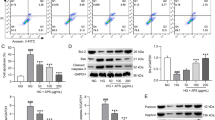Abstract
In pancreatic cells, NO formation is associated with increased levels of cGMP and endocrine/ exocrine secretion. In the present study, the role of NO in the regulation of exocrine secretion was investigated in rat pancreatic tissues. Treatment of rat pancreatic tissue with cholecystokinin-pancreozymin (CCK-PZ) resulted in an significant increase in arginine conversion to citrulline, the amount of nitrite/nitrate, the release of amylase, and the level of cGMP. Furthermore, CCK-PZ-stimulated increase of amylase release and conversion of arginine to citrulline transformation were counteracted by the inhibitor of NO synthase, NG-nitro-L-arginine methyl ester. The results on the time course of CCK-PZ-induced citrulline formation and rise of cGMP level indicate that NO synthase and guanylate cyclase are activated within the first seconds of stimulation. The kinetics of citrulline accumulation correlate well with those of cGMP rise, which further confirms the conclusion that NO mediates the response to CCK-PZ by cGMP.
Similar content being viewed by others
References Cited
Bennett, M. A., Watt, P. A. C., and Thurston, H., Endothelium-dependent modulation of resistance vessel contraction: studies with NG-nitro-L-arginine methyl ester and NG-nitro-L-arginine.Br. J. Pharmacol. 107, 616–621 (1992).
Bernfeld, P., Amylases, α and β.Method in Enzymol., Vol. 1., Academic press, New York, 149–158 (1955).
Bradford, M. E., A rapid and sensitive method for the quantitation of microgram quantities of protein utilizing the principles of protein-dye binding.Anal. Biochem. 42, 248–254 (1976).
Bredt, D. S., and Snyder, S. H., Isolation of nitric oxide synthetase, a calmodulin-requiring enzyme.Proc. Natl. Acad. Sci. USA 87, 682–685 (1990).
Corbett, J. A., Sweetland, M. A., Lancaster, J. R., Jr., and Mcdaniel, M. L., A 1-hour pulse with IL-1β induces formation of nitric oxide and inhibits insulin secretion by rat islets of Langerhans: evidence for a tyrosine kinase signaling mechanism.FASEB J. 7, 369–374 (1993).
Furchgott, R. F., and Zawadzki, J. V., The obligatory role of endothelial cells in the relaxation of arterial smooth muscle by acetylcholine.Nature 288, 373–376 (1980).
Garbers, D. L., Guanylyl cyclase receptors and their endocrine, paracrine, and autocrine ligands.Cell 74, 1–4 (1992).
Garthwaite, J., Charles, S. L., and Chess-Williams, R., Endothelium-derived relaxing factor release on activation of NMDA receptors suggests a role as intracellular messenger in the brain.Nature 336, 385–388 (1988).
Gukovskaya A., and Pandol S. J. Nitric oxide production regulates CGMP formation and calcium influx in pancreatic acinar cells.Am. J. Physiol 266: G350-G356 (1994).
Ignarro, L. J., Bugo, G. M., Byrns, R. E., and Chaudhuri, G., Endothelium-derived relaxing factor produced and released from artery and vein is nitric oxide.Proc. Natl. Acad. Sci. USA 84, 9265–9269 (1987).
Knowles, R. G., and Moncada, S., Nitric oxide synthase in mammals.Biochem. J. 298, 249–258 (1994).
Moncada, S., Palmer, R. M. J., and Higgs, E. A., Nitric oxide: physiology and pharmacology.Pharmacol. Rev. 44, 109–142 (1991).
Muallem, S., Calcium transport pathways of pancreatic acinar cells.Annu. Rev. Physiol. 51, 83–105 (1989).
Nathan, C., and Hibbs, J. B., Role of nitric oxide synthesis in macrophage antimicrobial activity.Curr. Opin. Immunol. 3, 65–70 (1991).
Nathan, C., and Xie, Q.-W., Nitric oxide synthases: roles, tolls, and controls.Cell 78, 915–918 (1994).
Palmer, R. M. J., Ferrige, A. G., and Moncada, S., Nitric oxide accounts for the biological activity of endothelium derived relaxing factor.Nature 327, 524–526 (1987).
Pandol, S. J., and Schoeffield-Payne, M. S., Cyclic GMP mediates the agonist-stimulated increase in plasma membrane calcium entry in the pancreatic acinar cells.J. Biol. Chem. 265, 12846–12853 (1990).
Schmidt, H. H. H. W., Warner, T. D., Ishii, K., Sheng, H., and Murad, F., Insulin-secretion from pancreatic B-cells caused by L-arginine-derived nitrogen oxides.Science 255, 721–723 (1992).
Solomon, T. E., Control of exocrine pancreatic secretion. In:Physiology of the Gastrointestinal tract 2, 1173–1208 (1987)
Author information
Authors and Affiliations
Rights and permissions
About this article
Cite this article
Seo, DW., Nam, S.W., Nam, T.K. et al. Effect of cholecystokinin-pancreozymin on the nitric oxide synthase activity and cyclic GMP level in rat pancreatic tissue. Arch. Pharm. Res. 18, 434–439 (1995). https://doi.org/10.1007/BF02976348
Received:
Issue Date:
DOI: https://doi.org/10.1007/BF02976348




